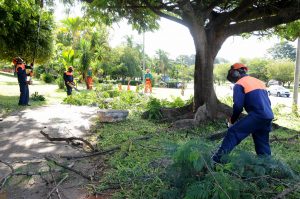Torrefaction is an inert thermal process (up to 300 °C) that promotes changes in the chemical and physical properties of biomass, decreasing the time and energy required for biomass conversion. In this work, an online method – TG coupled with FTIR – and elemental analysis were applied to acquire data in order to perform an experimental and numerical thermal upgrading assessment of Eucalyptus grandis, and in turn study the torrefaction mechanism. A thermal sensitivity numerical model was employed to obtain two-step reaction kinetic rates and solid and volatile compositions. The FTIR results added new perceptions that correlate and validate the solid and volatile pseudo-component distribution, the solid elemental composition prediction, devolatilization, and solid HHV estimation. As a result, the 2D property mapping allowed for a qualitative and quantitative assessment of all torrefaction severities. The obtained kinetics and the response diagrams from the numerical results can provide valuable references for practical operations and reactor design.







